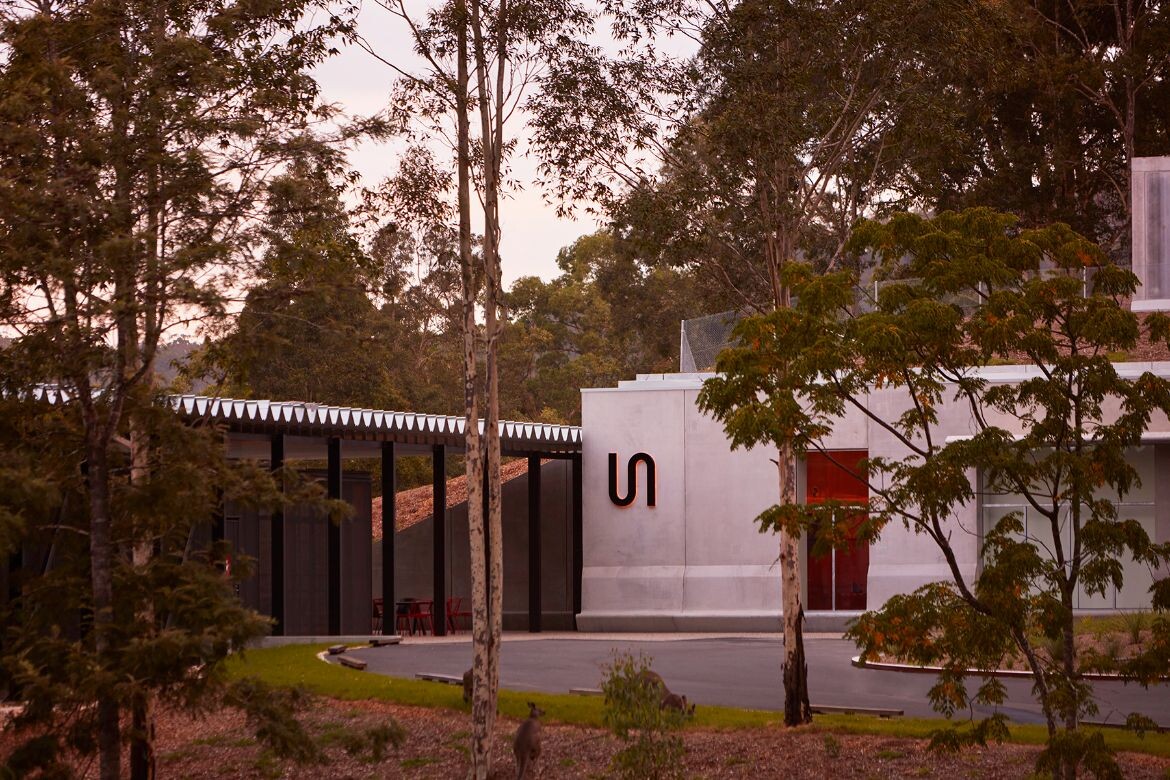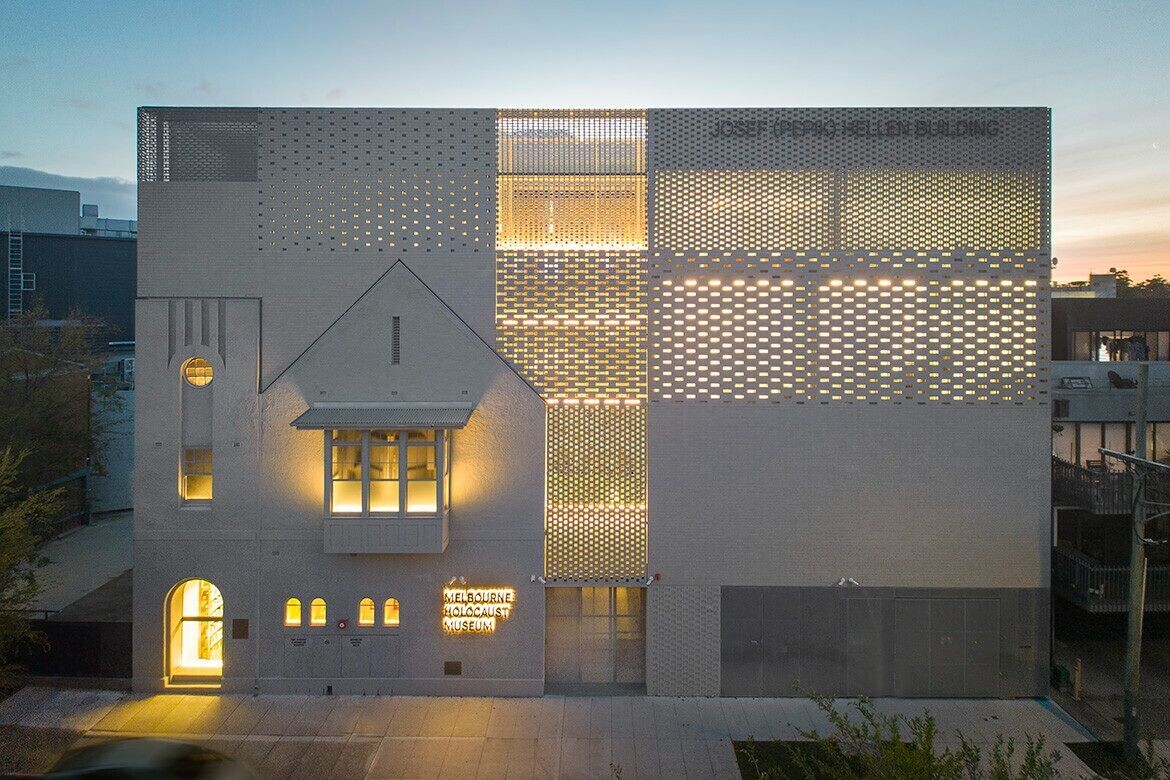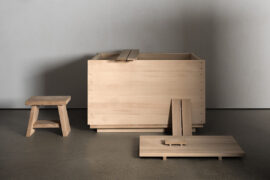Timothy Alouani-Roby caught up with the Melbourne-based architect at the World Architecture Festival (WAF) after her AIA Gold Medal speech.

December 5th, 2023
This year’s AIA Gold Medallist, Kerstin Thompson, was just about the busiest person in Singapore on the first day of WAF 2023. It began with a crit presentation for Kerstin Thompson Architects’ (KTA) Melbourne Holocaust Museum project before concluding, many hours later, with a 45-minute speech as part of the AIA Gold Medal tour.
The latter speech was hosted at Space Furniture’s Singapore showroom, with the beginning of Thompson’s talk accompanied rather ominously by the sound of Singaporean thunder rolling through as she took the mic. Shortly afterwards, it was also announced that the Melbourne Holocaust Museum had been highly commended in the culture category at WAF.

Perhaps the most notable – and commendable – feature of Thompson’s speech was her willingness to use it as a platform to call out problems in the industry and to advocate for positive change. This wasn’t the immodest grandstanding of an accomplished architect keen to pontificate about the unending profundity of their own work.
The structure of the architectural workplace and the role of the architect were some of the key systemic, structural issues that Thompson drew attention to. Why, for instance, is there a widespread axiom across architecture that being underpaid and overworked are, at best, normal – or, worse, something to be masochistically revelled in?

“I think that we, as an industry, have had this myth that great architecture happens if you work crazy hours,” says Thompson. “To continue to do good design, you need an office that is flourishing. If you don’t have that, there is burnout, you lose good people and the work gets worse.
“Our quest has always been this: how do you pay people fairly, have a reasonable work-life balance, and still do good work? It’s really hard, and I will say that I think our industry is slightly broken as a model of quality and remuneration in balance. A challenge for all of us at the moment – and something I’m willing to add my thinking to – is how we structure what we do and how it’s valued in a way that makes more sense in our current conditions.”
Related: Five insights from Australian designers at WAF 2023

One of the crucial takeaway messages is that good design need not be in opposition to commercial acumen; that rigor in the design process need not mean a poor work-life balance. Thompson acknowledges that her own practice’s striving towards these goals is imperfect, but underlines the importance of collectively changing the consciousness of the profession.
Such thoughts and provocations about the workplace lead to questions about the role of the architect today, especially in a context where so much of that traditional role has been annexed by project management and other adjacent fields. Thompson proposes an intriguing response: what if the architect should re-evaluate the scope of their role by jettisoning some of it?

If some of the bureaucratic or technocratic elements, for example, could be shed, might it free up more time and space for architects to meaningfully influence the areas they care about, such as designing public space that democratically centres human experience?
“It might be better to rethink where we have the most impact – management of design and value – and how we charge for that, and even to drop some of the things we spend a lot of time and money on but that, in the end, don’t eventuate” says Thompson.
“I think we need to find new ways of doing what we do and to have impact in the right way – in multi-residential housing, for example, and more focus on the typology and formation of the public realm,” she adds.

Aside from the provocations and big-picture thinking on the state of the industry, Thompson’s Gold Medal speech was also a chance to tell a personal story and acknowledge the role of one’s own experiences in shaping design sensibilities. Indeed, her ability to move between these two poles – the intimate and personal on one hand, the structural and political on the other – was perhaps the most notable feature of the talk.
Kerstin Thompson Architects is quite explicit, she explains, in not seeking to have its own distinctive style. Instead, it’s all about context – a pivotal point that came out when we visited Bundanon earlier this year. Thompson speaks about how, even during her student days, a curiosity towards interstitial spaces, and the capacity of human use of space to transform it, superseded an interest in brute material form.

“We like to pose the question, ‘what here?’ By that I mean, what is distinctive about the actual situation that you’re working with for that particular project? It’s why we avoid a signature style, because we like to think from first principles about what is unique to a place.
“I know a lot of architects say that, but they can still have patterns that come out. That’s where I do hope our particular body of work stands out. I like the fact that we can jump around in our approach and confound people’s expectations of what we’ll do next,” says Thompson.
Having always straddled the worlds of practice and academia – a ‘pracademic’, as she puts it – Thompson has continually refused the kinds of rigid binaries that can shut down creative thought. “I do think that the most critical practices in Australia have found a way to bring big, speculative aspirations to actual realisable, built projects.” Speaking on the world stage at WAF under both Kerstin Thompson Architects and AIA banners, it’s a thought about Australian architecture that resonates deeply.
Kerstin Thompson Architects
kerstinthompson.com
Photography
Various

INDESIGN is on instagram
Follow @indesignlive
A searchable and comprehensive guide for specifying leading products and their suppliers
Keep up to date with the latest and greatest from our industry BFF's!

For those who appreciate form as much as function, Gaggenau’s latest induction innovation delivers sculpted precision and effortless flexibility, disappearing seamlessly into the surface when not in use.

From the spark of an idea on the page to the launch of new pieces in a showroom is a journey every aspiring industrial and furnishing designer imagines making.

Sydney’s newest design concept store, HOW WE LIVE, explores the overlap between home and workplace – with a Surry Hills pop-up from Friday 28th November.

In an industry where design intent is often diluted by value management and procurement pressures, Klaro Industrial Design positions manufacturing as a creative ally – allowing commercial interior designers to deliver unique pieces aligned to the project’s original vision.

Jason Gibney, winner of the Editor’s Choice Award in 2025 Habitus House of the Year, reflects on how bathroom rituals might just be reshaping Australian design.

J.AR OFFICE’s Norté in Mermaid Beach wins Best Restaurant Design 2025 for its moody, modernist take on coastal dining.
The internet never sleeps! Here's the stuff you might have missed

Now cooking and entertaining from his minimalist home kitchen designed around Gaggenau’s refined performance, Chef Wu brings professional craft into a calm and well-composed setting.

The Simple Living Passage marks the final project in the Simple World series by Jenchieh Hung + Kulthida Songkittipakdee of HAS design and research, transforming a retail walkway in Hefei into a reflective public space shaped by timber and movement.